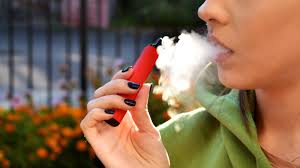
Adolescence, E-Cigarettes, Nicotine Addiction Vaping and Youth health
- todayworldzone
- 0
- Posted on
Adolescence:
Adolescence is a wonderful time of exploration and autonomy, but parents still matter.
- Conflict between parents, not divorce, can lead to social and emotional issues in teens.
- Parental monitoring and involvement are important in mitigating risky behaviors
- Smartphones and social media can increase access to risky behaviors and peer pressure
- Behavior-specific and situation-specific effects of smartphones and social media
Promoting, E-Cigarettes and Cannabis:
Teens are being targeted by industries promoting e-cigarettes and cannabis, leading to high usage rates.
- E-cigarette use among teens has increased dramatically since 2017
- Marketing and flavors are targeting young people, with some products marketed towards children
- Concerns about the impact on social and physical development, as well as the risk of addiction and health issues
Nicotine addiction:
Teens are becoming addicted to nicotine through flavored e-cigarettes marketed towards them.
- Teens start using e-cigarettes due to flavors and marketing.
- High levels of nicotine in e-cigarettes lead to addiction within weeks.
- Teens are using e-cigarettes as soon as they wake up, showing signs of addiction.
- Withdrawal symptoms include shaking, sweating, and lack of concentration.
Vaping Products and Negative Impact Brain:
Teens are getting creative in accessing and affording vaping products, which contain harmful chemicals and can negatively impact brain and lung development.
- Teens may buy and share pods, or even sell them for a few cents per puff.
- Parents may also buy e-cigarettes for their teens.
- Vaping can harm brain development and increase addiction risk.
- E-cigarettes contain harmful chemicals, including aldehydes and flavor ants, which can damage lungs and increase cancer risk.
- Vaping can make it harder to exercise and participate in athletics.
Teens are curious and telling them to just say no to drugs doesn’t work.
- Teens need to weigh the benefits and risks of drug use.
- Messages should focus on social aspects and industry targeting.
- Cannabis use in teens is increasing, with concerns about THC potency and addiction.
- High THC cannabis use in youth may be causal towards the development of psychosis.
- Quitting vaping and cannabis can be difficult, with recovery programs available.
Nicotine and cannabis are addictive and difficult to quit, especially for teens.
- Cannabis addiction affects 1 in 6 teens under 25.
- Nicotine replacement therapy is not FDA-approved for those under 18.
- Teens may need a combination of nicotine replacement, healthy habits, and therapy to quit.
- Social pressure and the desire for social status can make quitting difficult.
Teens are engaging in less risky sexual behavior and driving less frequently.
- Rates of risky sexual behavior and teen pregnancy have decreased.
- Teens are delaying getting their driver’s license and engaging in less physical risk-taking behavior.
- Rideshare services like Uber and Lyft have contributed to the decrease in drunk driving accidents.
Having conversations about risky behaviors with young people is crucial for prevention.
- Starting conversations about decision making and healthy behaviors at a young age can normalize these discussions.
- Simply using a “just say no” approach is not effective.
- Different countries have different approaches to discussing risky behaviors with young people.
- Concerns about nicotine pouches, such as Zin, are increasing and may be a gateway to addiction.
- The brain development of young people is negatively impacted by high levels of nicotine, regardless of the form it comes in.
Comprehensive education and harm reduction are more effective than simply saying “just say no” to drugs and risky behavior.
- Harm reduction includes providing resources like Naloxone and condoms.
- Comprehensive education covers a spectrum of behavior from no use to regular use.
- Teens want truthful information and need to be armed with knowledge to protect themselves.
- Fentanyl is a growing concern and is being mixed into various drugs.
- There is a need for both education and policies to address drug use and risky behavior.
Teens are self-medicating with drugs due to stress and anxiety, leading to mental health issues.
- Nicotine and cannabis use during adolescence can lead to addiction and rewiring of the brain.
- Co-use of multiple drugs can enhance the high but also lead to mental health issues.
- Teens need to be educated on the long-term implications of their choices and how it affects their goals.